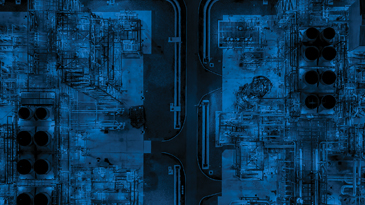There is no quick fix to developing the perfect asset performance management (APM) strategy for your organization, and if you’ve read my recent blog “Six Steps for Tapping Into the Power of Machine Learning,” you’ve learned how to efficiently and sustainably create value using this advanced technology.
Implementing a machine learning application, however, will be an iterative process that will need refining as increasing benefits are achieved. Selecting the machine learning application that best suits your organization’s needs can be daunting. Here the six things you should look for in order to choose the asset performance management solution that best suits your company’s needs:
-
Proven, repeatable success. You need a software partner that offers a comprehensive approach to the project with associated milestones and a repeatable framework for implementation. You don't want to select software that requires a labor-intensive deployment. Let the software do the heavy lifting!
We've deployed machine learning and delivered a return on investment in fewer than 90 days, with a 10X return on investment within the first year. Make sure you know the critical milestones and manage expectations appropriately from the start.
-
Beauty before age. Embrace the newest software built with an open architecture. Don’t use a 1990s approach and build a first-principles model of the asset and then tune the model with real-time data while relying upon equations and statistical deviations from normal conditions. The right machine learning software will take your existing data — from your process, asset and enterprise — and leverage it to measure failure signatures.
This approach goes beyond simple asset models. Taking the data around the asset, applied with skill and your domain expertise, machine learning absorbs hard, measured sensor and maintenance data, collected over long periods of time to identify patterns that humans cannot see. Discovered patterns are the exact signatures that define normal behavior versus the excursions leading to degradation and failure. Twenty-to-30-year-old technology cannot compete — and will soon become shelf-ware.
-
More than simple asset models. You cannot separate the machine from the process or the process from the machine. Select software that looks first at sensors across the full equipment boundary. The best software will detect patterns via agents — software bots to comb your data — that find failure signatures.
Look at the data from the maintenance management system and compare it against the process data coming out. This comparison helps differentiate between human induced events and mechanical or system failures. These agents also find anomaly agents, meaning the software also detects normal operating behavior. One asset may have many agents dedicated to normal behavior as well as the potential degradation and failures on that asset.
-
Transfer learning. Only the best machine learning packages can offer true transfer learning. This means that if you deploy agents on, for example, one compressor (or another asset), the same agents can be transferred to monitor other compressors of the same model and type. This streamlines machine learning to identify impending failures in time to take corrective action. The new compressor can then identify new failure agents that can be shared across similar assets, and so on and so on. With the best package, each asset is not unique — and can “learn” from others.
-
Software that is easy to use. Remember, with the right software you don't have to hire teams of data scientists and Ph.D.s. The software should be intuitive, and you should be able to leverage your existing team. A wizard-driven tool ensures that you, or a member of your team, will be in the driver’s seat.
-
Lead time. This is the big one. Select machine learning software that offers you the most time to take corrective action. The software should offer predictive but also prescriptive actions. If you take the widely used P-F curve, the goal is to move P to the far left of the Y (or time) axis, giving you more time to make decisions and mitigate impending failures. After all, time is money.
Even with the endless possibilities of current computing power and data, don’t forget the criticality of your people. Remember, it took a team of scientists and non-scientists working with tribal knowledge and technology to bring home three men from the deepest part of space after a catastrophic event occurred on Apollo 13. With the right process, people and technology, you are sure to be a success!
To learn more about how companies are leveraging this advanced technology, take a look at the recent white paper Low-Touch Machine Learning is Fulfilling the Promise of Asset Performance Management.






Leave A Comment